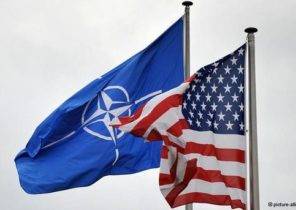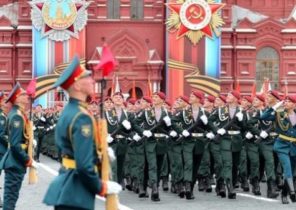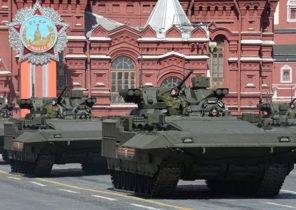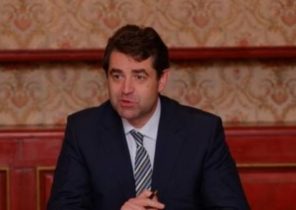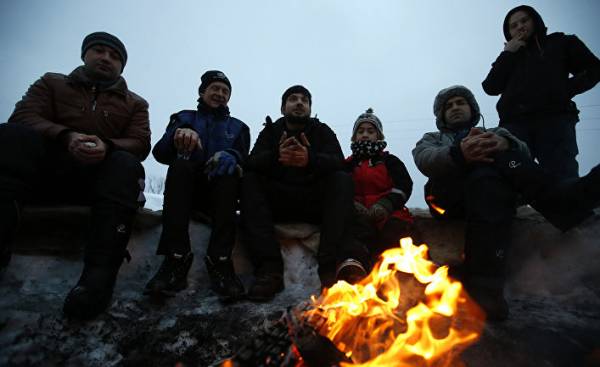
Seven thousand refugees arrived in Norway and Finland through Russia a little over a year ago. Many of these people were transferred by criminal organizations.
Only a few snow-covered cars at the border crossing point Raja-jooseppi are reminiscent of those refugees who arrived via Russia in the fall of 2015 and winter of 2016.
“”Lada”, “Samara”, “Samara”, there appears to be more “Passat”,” — lists the head of the shift of the border crossing point Raja-jooseppi petteri Portti (Petteri Portti).
One January Saturday journalists Svenska Yle and NRK, the Norwegian arrived at the border crossing to take, what their daily life is.
A few cars coming from the Russian side, apparently, in Ivalo shopping.
The average weekday are approximately 150 people cross the border at the weekend will be more. The liveliness of the movement across the border tied to the ruble, when he is strong, movement aktiviziruyutsya.
Usually quiet life in point Raja-jooseppi changed when in the fall of 2015 across the border have begun to move the refugees. At first they were few, but very quickly, the flow of refugees in the East of Lapland have increased.
“Machines on which people came seeking refuge were in bad condition and not fit to drive on the roads of Finland. They were either confiscated by the state, or they came back to the owners,” says petteri Portti.
Crossing the border quickly familiarize themselves with traditional Finnish construction problem. The building of the border point is not used due to poor indoor air.
Now the border crossing is located in a temporary barracks. The room is not designed for dozens of refugees every day, and it became a problem.
“Autumn continued, and became increasingly difficult to leave people outside waiting for the asylum application will be processed. First, they had to wait in the bus that was taking them to a shelter in Tornio approximately 500 kilometers from here,” says petteri Portti.
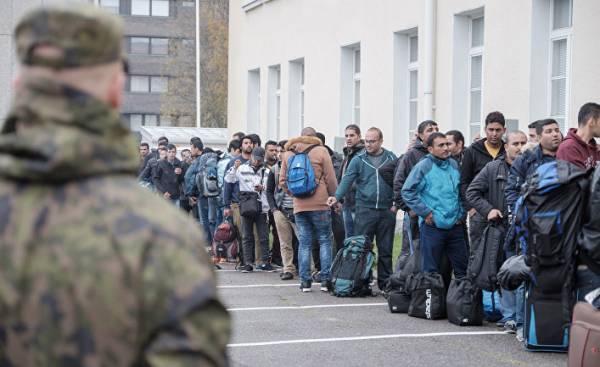 © AP Photo, Panu Pohjola/Lehtikuva via Emigranti await distribution in Tornio in Finland
© AP Photo, Panu Pohjola/Lehtikuva via Emigranti await distribution in Tornio in Finland
50 kilometers to the shop
Point Raja-jooseppi is located in national Park Urho Kekkonen. It’s a wasteland. Your nearest store is located in Ivalo, about 50 miles away. In point Raja-jooseppi had to bring a mobile outdoor toilets, and a heated tent.
“There were families with children, so in addition to the regular handling of applications for asylum, we had to follow, so none of them starved and froze. For everyone who works here, there were extraordinary circumstances,” says petteri Portti.
Fall 2015 and winter 2016 in point Raja-jooseppi all turned on its head. But why through the Northern border crossing points of Finland lies the path to a better life and security?
The flow arriving through the Russian refugees emerged in the late summer of 2015 in Norway, the border crossing at Storskog. The fact that the flow will spread from Northern Norway to Finland, it seemed unlikely.
Most refugees arrived in Finland from Sweden, they met in the orphanage in Tornio.
A complete surprise
No one expected that refugees will start to come from Russia, and least expected that they would do it through the Northern border crossing points. Seemed incredible that the way refugees will pass through the wasteland.
But gradually began to receive refugees on bicycles.
The Norwegian government did not like the fact that Norway is considered a country that accepts refugees with open arms. When more than five thousand people came through Russia, Norway closed the border for them.
“It is important to convey to those who want to come, that our doors do not open wide and enjoy asylum is not easy,” said the Prime Minister of Norway Erna Solberg (Erna Solberg).
 © AFP 2017, Jonathan NackstrandКПП on the Russian-Norwegian border
© AFP 2017, Jonathan NackstrandКПП on the Russian-Norwegian border
More and more people were forced to abandon the plan to travel to Norway, and they were trying to get to Finland. As a growing stream of refugees across Russia, from the Finnish side there are more issues.
“If we sent people back who did not have visas, they came back the next day and said that to seek asylum. In this case, they had the right to go to Finland,” says shift supervisor of the border crossing point Raja-jooseppi petteri Portti.
Confidence has been shattered
For political leadership, the situation was tense. Before the Finnish border authorities could always be sure that cooperation with Russia is functioning as it should. And politicians and officials felt that it was time to clarify this issue.
The chief of staff of the Ministry of the interior päivi Nerve (Päivi Nerg) visited Russia several times. She heard that Russia can not prevent people to leave the country, but it was an unsatisfactory answer.
“We were told that the activities of criminal organizations and that the transfer across the border for a fee are engaged in smuggling” — said päivi Nerve.
This activity forced the border guards to carry out 200 investigations, about ten cases were forwarded to the Prosecutor.
Since the late 1950s, cross-border cooperation between Finland and Russia was first class, the expert on Russia rené Nyberg (René Nyberg), former Ambassador of Finland in Moscow.
According to him, it is obvious that the Russian leadership knew about what was happening, but their motives are hard to understand.
“The Russian authorities control the border, and there was nothing going on without their knowledge. Speaking of authorities, I mean intelligence service, the FSB, which reports directly to President Putin,” says rené Nyberg.
Svenska Yle: What would make Russia?
Rene Nyberg: I’m not sure I can answer this question, but we can assume that it was a signal that, if need be, they can make trouble for us. This is bad, and, of course, have left their traces, because everything happened very suddenly.
— What do you think, from the point of view of Russia, this operation was successful?
— From the Russian point of view, it failed completely. When thousands of people appear in Murmansk or Kandalaksha, arriving there with the help of criminal organizations, the question arises why the Russian authorities are cooperating with criminal organizations.
Next — an excerpt from investigation of the Finnish border guard service about the organization of illegal entry into the country.
A: You can bring a young man from Murmansk tomorrow?
B: Yes.
A: Great. How much?
B: As usual, 500.
Nearly 1.7 thousand people came to Finland via Russia from September 2015 to February 2016.
They came from 37 countries, some of them for a long time lived in Russia. Others have left their homeland to try to get to Finland.
According to the Migration Department, about 60% had been refused asylum, 25% received it.
The rest withdrew their applications, or applications stopped for some other reason.
Nothing happens by chance
Rarely on the two Northern most border crossings you can see so many journalists.
Uncertainty about how long the refugees will be arriving in Russia was great. At some period the estimated number of refugees that could arrive in Russia amounted to 7.5 thousand people.
Photographer Jussi Nukari (Jussi Nukari) from the Finnish news Agency STT has worked on both sides of the border. In the course of normal conversation with an employee of the Russian border service, he found out some interesting details about the control of the flow of people from the Russian wastelands.
“I asked if it’s dangerous all, and suddenly there are problems with the machine despite the fact that the cold and the nearest house is 30 kilometers. No, there is no danger, I got the answer. The FSB border service and the government of the Kandalaksha district is following all the machines. So, as I understand it, nothing was accidental,” said Jussi Nukari.
When the refugees came to Finland across the Russian border, in the media quite a lot has been written about what is happening with the permission of the Russian authorities. Some even claimed that the Russian authorities benefit from the flow of refugees.
Norwegian NRK has interviewed those who applied for asylum in Finland, and they told me that paid the Russian border, so they missed them across the border with Norway.
Svenska Yle: media claimed that Russian border guards escorted people to the border, you’ve received some clarity about such statements?
Päivi Nerve: According to information available to the police and border guards, there are criminal figures who are helping the refugees to move to Finland via Russia. But there was no evidence that it somehow involved the security service.
By the end of January 2016, the problem has attracted the attention of the political leadership of the country. The then Minister of internal Affairs of Finland petteri DEWA (Petteri Orpo) met with the Minister of internal Affairs of Russia Vladimir Kolokoltsev.
The key words are “cooperation” and “crime control” behind the flow of refugees through Russia. In the same week the Prime Minister Sipilä Juha (Juha Sipilä) met with Prime Minister Dmitry Medvedev. Once again on the agenda was the question of migration.
Russia wanted to signal
Now, more than a year later, still not clear, why the refugee routes were laid through the Northern border crossing points of Finland and Norway.
In Norway, they said, for example, that it was something of a hybrid war. Russia has used the immigration crisis to destabilize Norway.
Russian border service has allowed about 5.5 thousands of refugees to get to Norway, because Norway participated in the sanctions against Russia.
Senior researchers at the Institute of Fridtjof Nansen Arild My (Arild Moe) and Lars Rowe (Lars Rowe) have questioned this thesis. They believe that there is another explanation.
In their opinion, the fact that refugees have simply found a new, cheaper way to Europe.
This theory was recently refuted President Sauli Niinistö (Sauli Niinistö) in an interview for the newspaper Hufvudstadsbladet and Dagens Nyheter. Actually, it was a signal, says President Sauli Niinistö.
In opinion the General-the major of the border guard Ilkka Laitinen (Ilkka Laitinen), it is clear that put an end to this phenomenon.
“It ended on 26 February, when the President of Russia reported that the Russian government should fight against organized crime, which contributes to illegal immigration,” said Ilkka Laitinen, the Deputy chief of the border service.
The news spread, the human smugglers had to find new routes to Europe. It was immediately clear at the border crossings. The reign of peace.
In March 2016 Finland and Russia signed an interim agreement, which limited traffic through the border checkpoints Salla and Raja-Jooseppi. Only the Finns, Russians and Belarusians could cross the border.
The agreement is valid for 180 days and after it ended, the refugees never came back. The episode with the refugees on the Eastern border has been completed.
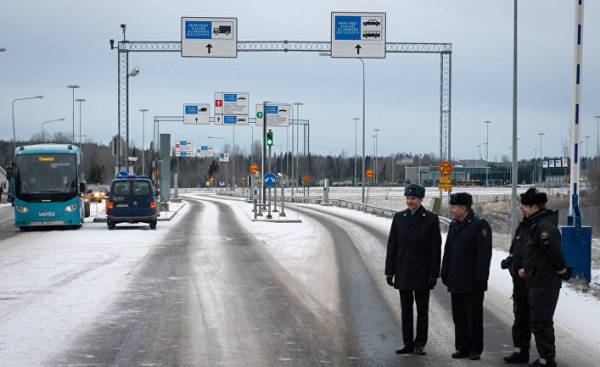 © RIA Novosti, Alexey Danichev | go to photobacteria and Russian customs officers at the border checkpoint cars MAPP”, Nujamaa” on the border of Finland and Russia
© RIA Novosti, Alexey Danichev | go to photobacteria and Russian customs officers at the border checkpoint cars MAPP”, Nujamaa” on the border of Finland and Russia
The relations between Russia and Finland the incident has not affected, says rené Nyberg.
“This question is discussed at all levels and now he’s already in the archive.”
Yle: What does it mean?
“The issue has been resolved, sometimes things happen,” says Renee Nyberg.
If foreign policy consequences not there, then the internal solutions event on the Eastern border affected.
There was a decision according to which the border service needs to save 28 million euros from 2013 to 2017. Meanwhile, the predictability of the situation in our border areas has deteriorated.
“The resources of the border guard service declined, despite the fact that the security situation in the world deteriorated markedly”.
How it affects the situation here, near the Eastern border?
“Resources have reduced by 40%. Of course, it’s clear that this complicates the work on the Eastern border,” — said Ilkka Laitinen.
The Ministry of internal Affairs understand that cuts to border services was inappropriate.
“This applies not only to what happened in point Raja-jooseppi and Salla, in General, changes in the security sphere. We believe that the control of the Eastern border are not at the level where it should be,” — said the chief of staff päivi Nerve.
Therefore, the Ministry of internal Affairs later this spring is going to offer to spend more money on border patrol.
Calm restored
Customs to auction confiscated cars. At the summer auction in Salle had a lot of curious, and 128 machines had new owners.
The auction seems to have become the final destination of this remarkable episode that has suddenly drawn attention to the problems of the world in the middle of winter in Lapland. It shows that sometimes it happens and something implausible.
“The fact that 1.7 thousand people through Russia to the dark and cold season came to two border crossing points in Lapland, it seems completely plausible. So you need to be very careful with claims that it can’t happen again” — said Ilkka Laitinen.
When we finish the interview with päivi Nerve, she said the unexpected thing. Actually, Finland did not really know what the real flow of refugees.
Yle: What do you mean?
“Climate change cause the appearance of new refugees. People are fleeing from starvation and lack of water. We saw only a tiny part of this process. Similarly, there is little hope that will end the war. If Europe will begin to come more refugees, then maybe Finland will once again be under the gun. At the moment in the world more than 60 millions of refugees,” — said the chief of staff päivi Nerve.
